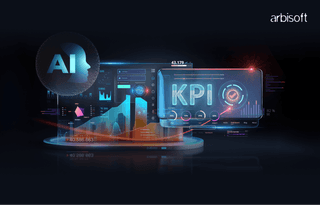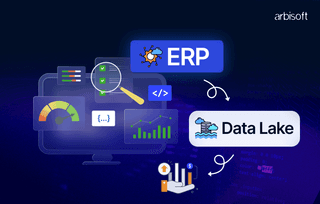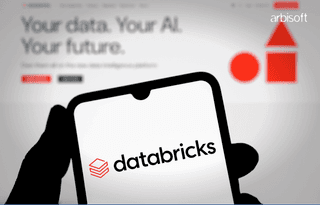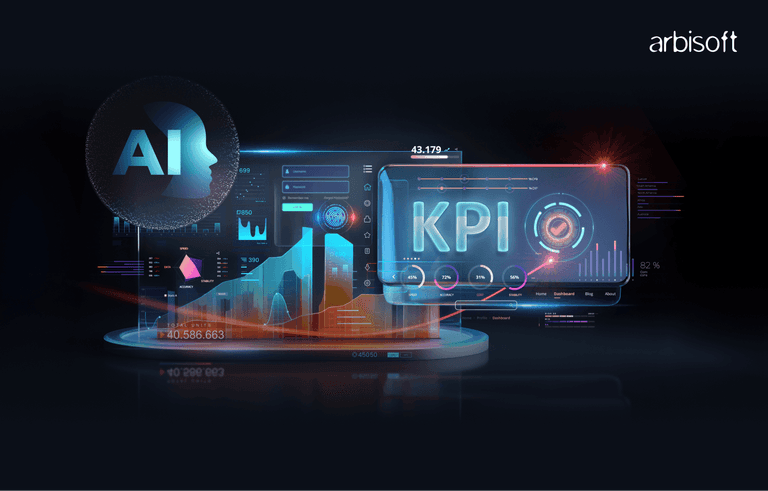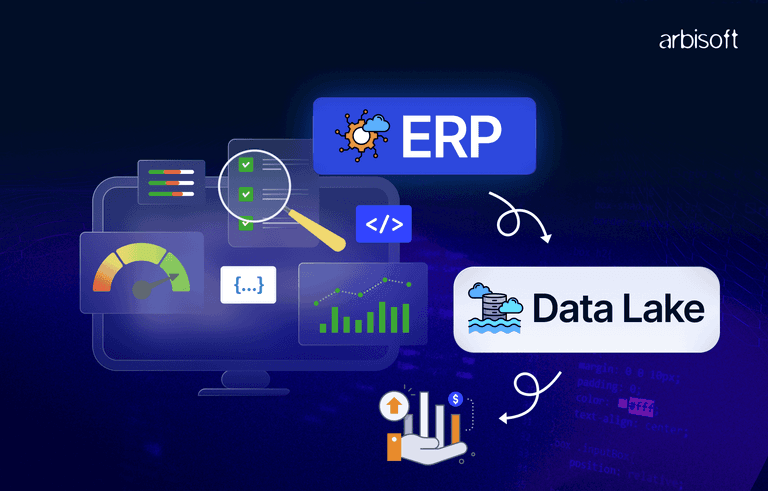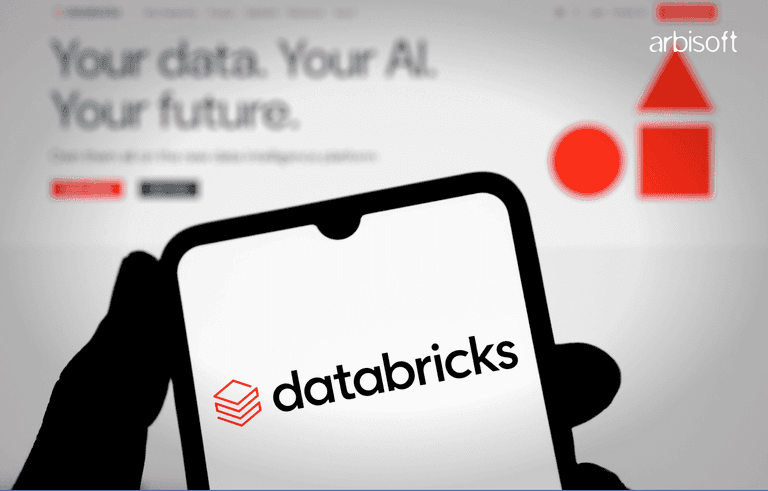We put excellence, value and quality above all - and it shows




A Technology Partnership That Goes Beyond Code

“Arbisoft has been my most trusted technology partner for now over 15 years. Arbisoft has very unique methods of recruiting and training, and the results demonstrate that. They have great teams, great positive attitudes and great communication.”
Simplifying the Databricks vs Snowflake Choice

If you’re in the cloud data platform market for a decent data warehouse solution, you will have probably narrowed it down to two choices: Databricks and Snowflake.
Is Databricks, known for its strong data processing and machine learning tools, better than Snowflake, which is popular for its ease of use and efficient data storage and sharing?
In this blog, we’ll make the choice easier by explaining the key features and benefits of both Databricks and Snowflake. By the end, you’ll know which platform is right for your data needs, helping you make the best decision for your business.
What Are Databricks and Snowflake?
Databricks is a cloud-based platform that focuses on big data analytics and machine learning. It was founded by the creators of Apache Spark, and it offers a collaborative environment for data scientists, data engineers, and business analysts to work together.
Snowflake, on the other hand, is a cloud-based data warehousing platform. It’s designed for data storage, processing, and analysis, making it easy to manage and query large amounts of data. Snowflake is known for its simplicity and powerful performance.
Having trouble deciding between Databricks and Snowflake? Take a quiz to figure it out!

Find Your Perfect Data Platform!
Take the quiz to discover if Databricks or Snowflake is right for you.

Common Features of Databricks and Snowflake
While Databricks and Snowflake serve different primary purposes, they share several common features that make them both powerful tools for data management and analysis:
- Cloud-Based: Both platforms are fully cloud-based, allowing for easy scalability, flexibility, and reduced infrastructure costs.
- High Performance: They are designed to handle large volumes of data efficiently, offering fast query and processing speeds.
- Data Integration: Both platforms support integration with a wide variety of data sources and formats, including structured and semi-structured data.
- Security: Databricks and Snowflake offer robust security features, including data encryption, role-based access control, and compliance with industry standards.
- Collaboration: Both platforms provide tools for team collaboration, allowing multiple users to work on data projects simultaneously.
- Automation: They support automation for data workflows, reducing manual effort and increasing productivity.
- Interoperability: Both platforms can be integrated with popular data tools and services, such as BI tools, ETL solutions, and machine learning frameworks.
Key Features and Benefits
Let’s discuss the key features and benefits of the both platforms:
Databricks
- Built on Apache Spark
Databricks is built on Apache Spark, a powerful tool for processing big data quickly. This means it can handle large datasets and complex tasks efficiently, making it great for analytics, data transformations, and real-time data processing. - Team Collaboration
It offers a workspace where data engineers, scientists, and analysts can work together smoothly. With features like shared notebooks and version control, teams can code, analyze, and visualize data in real-time using languages like Python, SQL, and more. - Supports Machine Learning and AI
Databricks is equipped for machine learning and AI projects. It includes MLflow, which helps track experiments, manage models, and deploy them easily. Plus, it integrates with popular ML libraries like TensorFlow and PyTorch. - Scalable Resources
Whether you're dealing with small or massive amounts of data, Databricks can adjust its computing power to fit your needs. This flexibility ensures you only use and pay for the resources you need. - Real-time Data Analysis
With features like Structured Streaming, Databricks can process live data streams as they come in. This is essential for industries that need up-to-the-minute insights, like finance or online retail. - Delta Lake Integration
Databricks includes Delta Lake, which adds reliability to your data storage. It ensures data accuracy and improves performance, making it easier to manage large data repositories.
Snowflake
- Simple Data Sharing
Snowflake lets you share data securely with others, even if they're in different organizations. With Secure Data Sharing, you can provide live, read-only access without copying or moving data. - Separate Storage and Computing
Its design allows you to scale storage and computing power independently. Need more storage? Increase it without affecting computing resources, and vice versa. This helps optimize performance and costs. - User-Friendly Interface
Snowflake is simple to use, even for those not deeply technical. Its SQL-based system is familiar to many, and it handles many backend tasks automatically, so you can focus on your data. - High-Speed Performance
Thanks to its multi-cluster setup, Snowflake delivers fast query results, even during busy times. It spreads tasks across clusters and optimizes queries to ensure speedy processing. - Handles Various Data Types
Whether your data is structured or semi-structured like JSON or XML, Snowflake can store and analyze it without extra steps. This flexibility streamlines the data analysis process. - Zero-Copy Cloning
Need a copy of your database for testing? Snowflake lets you create instant, writable clones without actually copying the data, saving time and storage space. - Automatic Scaling
Snowflake can adjust its computing resources on its own based on workload. This means consistent performance without manual tweaks, even when demands change. - Strong Security Measures
Snowflake prioritizes data security with features like encryption, multi-factor authentication, and compliance with regulations like GDPR and HIPAA. Your data stays protected at all times.
Main Functions
Databricks is commonly used for:
- Big data processing
- Real-time analytics
- Machine learning and AI
- Data engineering and ETL (Extract, Transform, Load) tasks
Snowflake is commonly used for:
- Data warehousing
- Business intelligence solutions
- Data integration
- Analytics on structured and semi-structured data
Pricing Comparison
Databricks pricing is based on compute usage, measured in Databricks Units (DBUs), and depends on the type of workload and the cloud provider you choose (AWS, Azure, or Google Cloud).
Snowflake uses a consumption-based pricing model. You pay for the storage you use and the compute resources consumed during query execution. Snowflake’s pricing can be more predictable due to its separation of storage and compute costs.
Which One Should You Choose?
Choosing between Databricks and Snowflake depends on what you need and the kind of data projects you're working on.
Choose Databricks if You:
- Need Advanced Data Processing and Real-Time Analytics
Databricks is great for tasks like complex data transformations, real-time data streaming, and handling large amounts of data quickly. It’s powered by Apache Spark, which makes it perfect for big data analytics, ETL (Extract, Transform, Load) operations, and stream processing. - Want to Use Machine Learning and AI
If you’re focused on building and deploying machine learning models, Databricks is a strong option. It offers tools like MLflow that make it easier to manage machine learning projects, making it a top choice for data science and advanced analytics. - Work with Large-Scale Big Data Projects
Databricks automatically scales its resources to handle large datasets, ensuring that you can process massive amounts of data without worrying about manual adjustments. It’s ideal for projects that require a lot of computational power. - Require Collaborative Development
If your team includes data engineers, scientists, and analysts who need to work together, Databricks provides a collaborative environment with shared notebooks and version control. This is especially useful for agile teams that need to collaborate closely.
Choose Snowflake if You:
- Need a User-Friendly Data Warehousing Solution
Snowflake is designed to be user friendly making it a good choice for teams that want powerful data warehousing capabilities without dealing with complex systems. Its SQL-based interface is familiar and doesn’t require deep technical expertise to manage. - Want to Optimize Costs by Separating Storage and Compute
Snowflake allows you to scale storage and compute separately, which can help save costs. Its pay-as-you-go model lets you adjust compute power as needed without affecting storage, making it a flexible and economical choice. - Need to Share Data Securely and Efficiently
If secure data sharing is important for your business, Snowflake’s Secure Data Sharing feature is a strong point. It lets you share live data with external partners or departments without moving or copying it, keeping the data secure and intact. - Handle Different Data Types Easily
Snowflake supports a mix of structured and semi-structured data formats like JSON, Avro, or Parquet. This makes it easier to store, process, and analyze diverse data types without needing complex transformations. - Need Reliable and Consistent Performance
Snowflake’s architecture ensures that your queries run quickly, even during peak times. If consistent performance is key to your operations, Snowflake’s automatic scaling and multi-cluster setup make sure your system handles fluctuations smoothly.
By considering these points, you can pick the platform that best matches your business needs and technical requirements. Both Databricks and Snowflake are powerful, but they excel in different areas of data management.
Wrapping Up
Choosing between Databricks and Snowflake depends on your specific needs and use cases. Databricks shines with its real-time analytics and machine learning capabilities, while Snowflake excels in simplicity, performance, and data warehousing.
By understanding their key features, benefits, and use cases, you can make a well-informed decision that aligns with your business goals. Whether you choose Databricks or Snowflake, both platforms offer powerful solutions for managing and analyzing your data.








